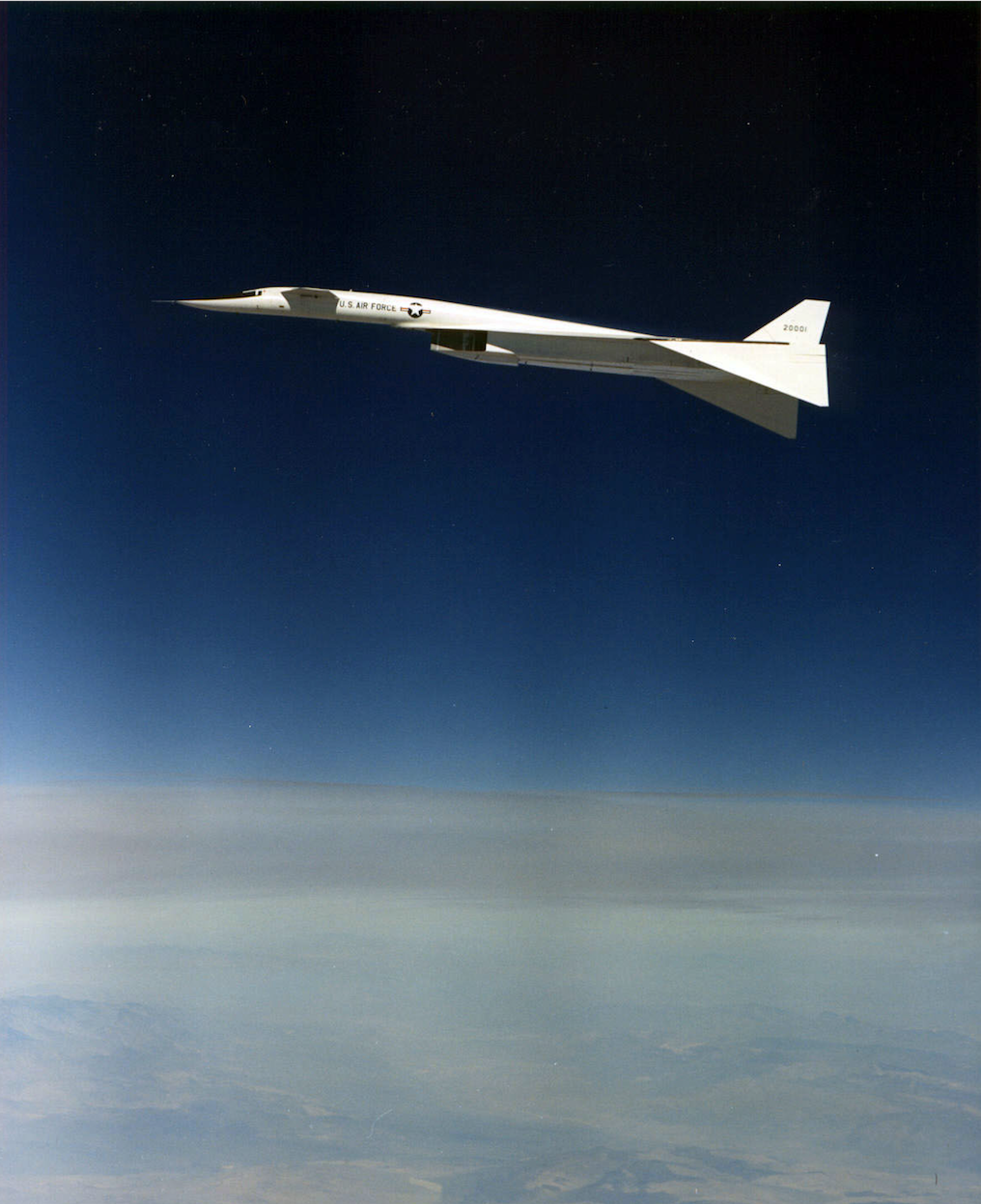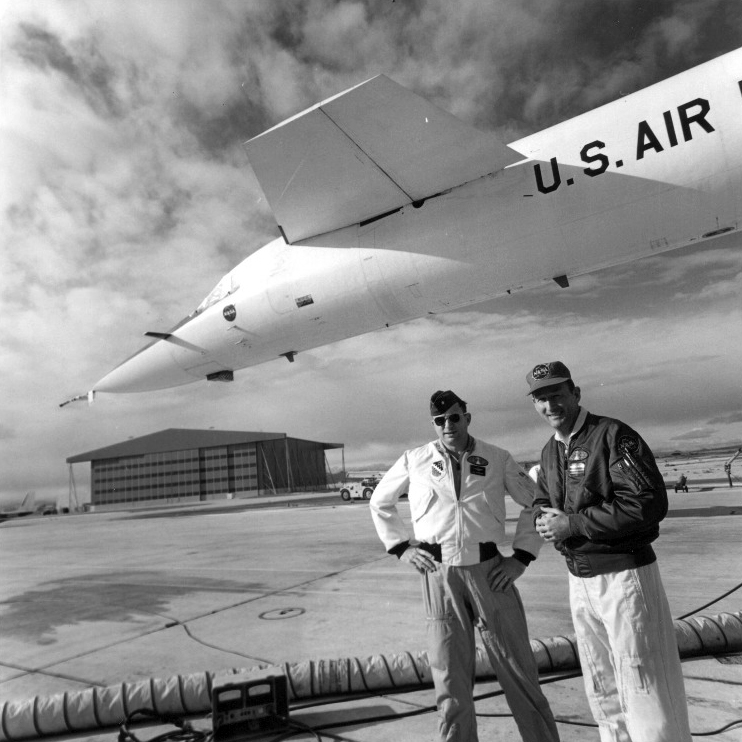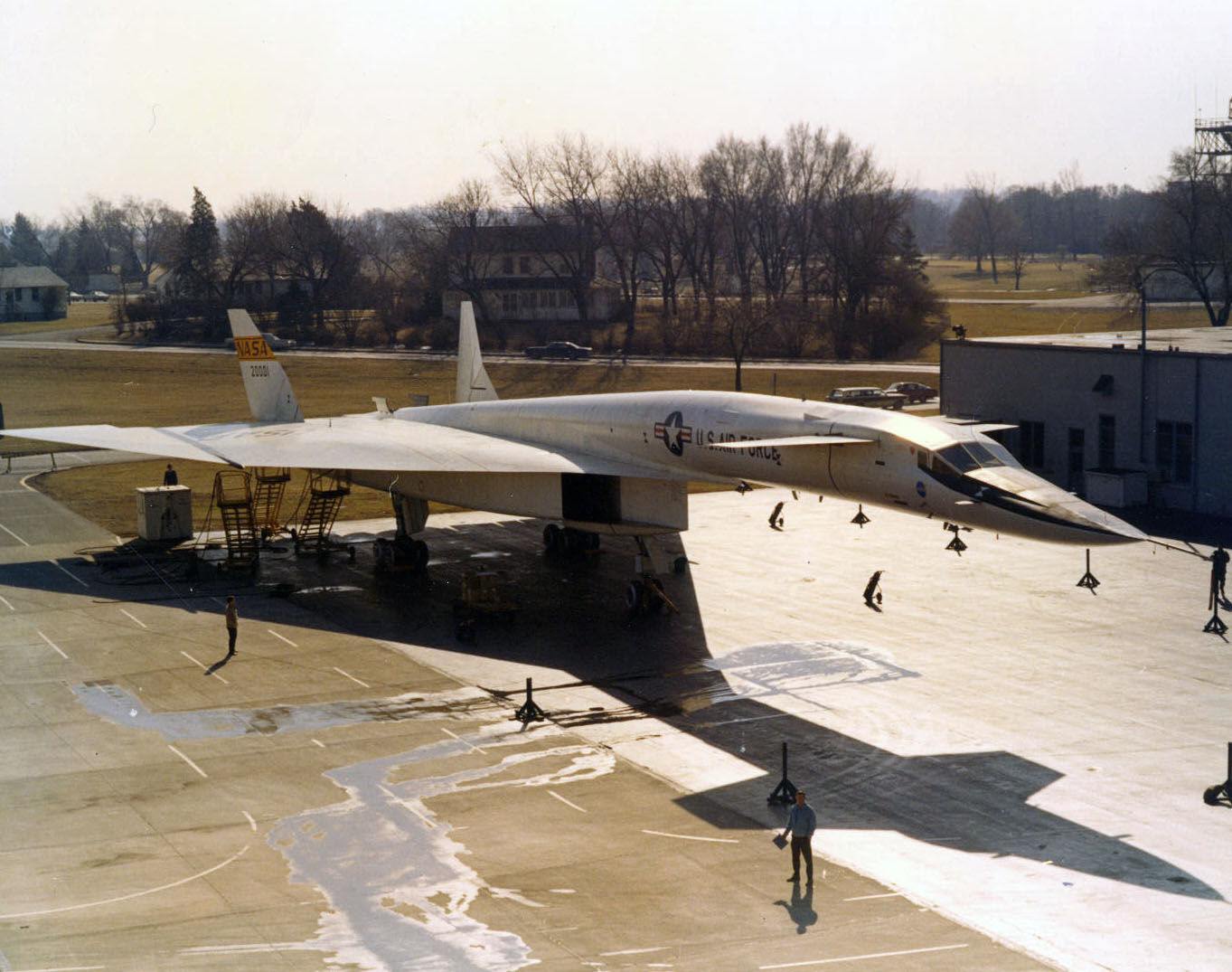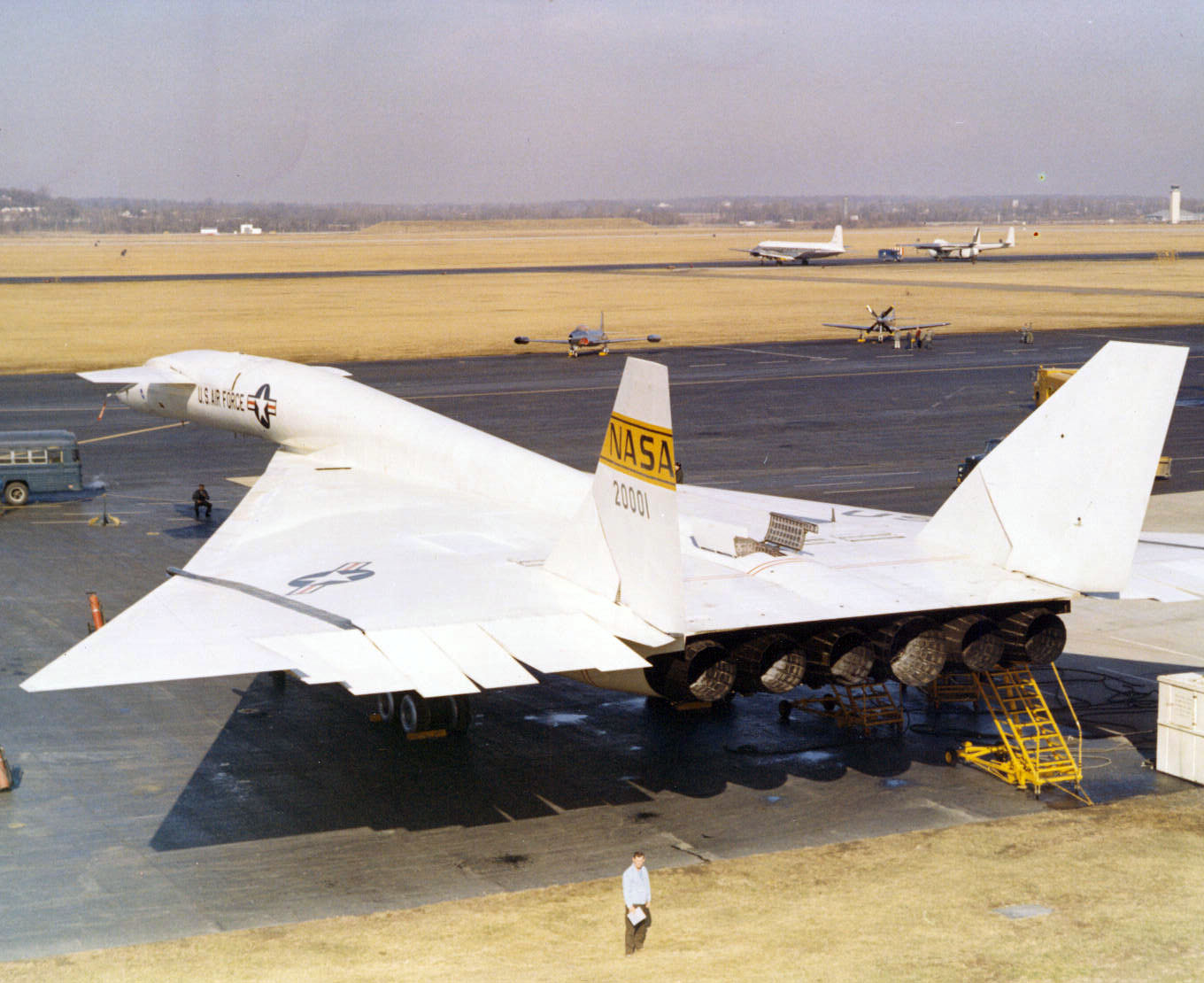
4 February 1969: The North American Aviation XB-70A-1-NA Valkyrie, 62-0001, made its very last flight from Edwards Air Force Base, California, to Wright-Patterson Air Force Base, Ohio. NASA Research Test Pilot Fitzhugh L. Fulton, Jr., Lieutenant Colonel, U.S. Air Force (Retired), and Lieutenant Colonel Emil Sturmthal, U.S. Air Force, were the flight crew for this final flight.
On arrival at Wright-Patterson, Fulton closed out the log book and handed it over to the curator of the National Museum of the United States Air Force.
The Mach 3+ prototype strategic bomber and high-speed, high-altitude research airplane made its first flight 21 September 1964. It completed 83 flights for a total of 160 hours, 16 minutes of flight time.


The XB-70A is 185 feet, 10 inches (56.642 meters) long with a wingspan of 105 feet (32.004 meters) and overall height of 30 feet, 9 inches (9.373 meters). The delta wing had 0° angle of incidence and 0° dihedral. (The second XB-70A had 5° dihedral.) The wing has 3.0° negative twist. At 25% chord, the wing has 58.0° sweepback. Total wing area is 6,297 square feet (585 square meters). The Valkyrie has a empty weight of 231,215 pounds (104,877 kilograms), and maximum takeoff weight (MTOW) of 521,056 pounds (236,347 kilograms).

The maximum speed achieved was Mach 3.1 (1,787 knots/2,056 miles per hour, or 3,309 kilometers per hour) at 73,000 feet (22,250 meters). Its mission maximum speed is 1,721 knots (1,980 miles per hour/3,187 kilometers per hour) at 79,050 feet (29,094 meters). The XB-70A has a rate of climb of 30,380 feet per minute (154 meters per second). The service ceiling is 77,350 feet (23,576 meters).
The Valkyrie has a maximum fuel capacity of 41,688 gallons (157,806 liters) JP-5 or JP-6, carried in 11 tanks throughout the fuselage and wings. It also carries 42.4 gallons (161 liters) of engine oil. The maximum range is 3,726 nautical miles (4,287 statute miles/6,901 kilometers).
The second Valkyrie, XB-70A-2-NA 62-0207, was destroyed when it crashed after a mid-air collision with a Lockheed F-104N Starfighter flown by NASA Chief Research Test Pilot Joseph A. Walker, 8 June 1966. Both Walker and the B-70’s co-pilot, Major Carl S. Cross, U.S. Air Force, were killed.
XB-70A Valkyrie 62-0001 is in the collection of the National Museum of the United States Air Force.


© 2025, Bryan R. Swopes